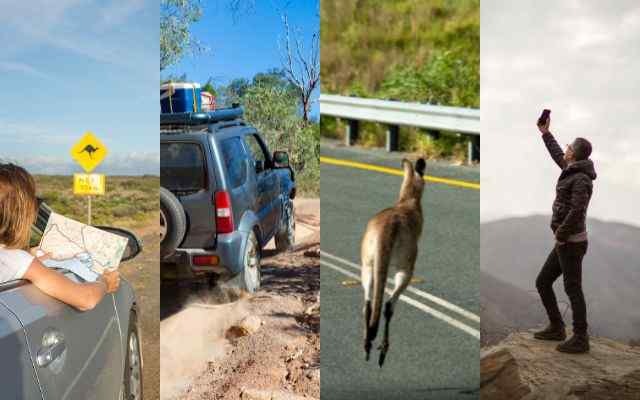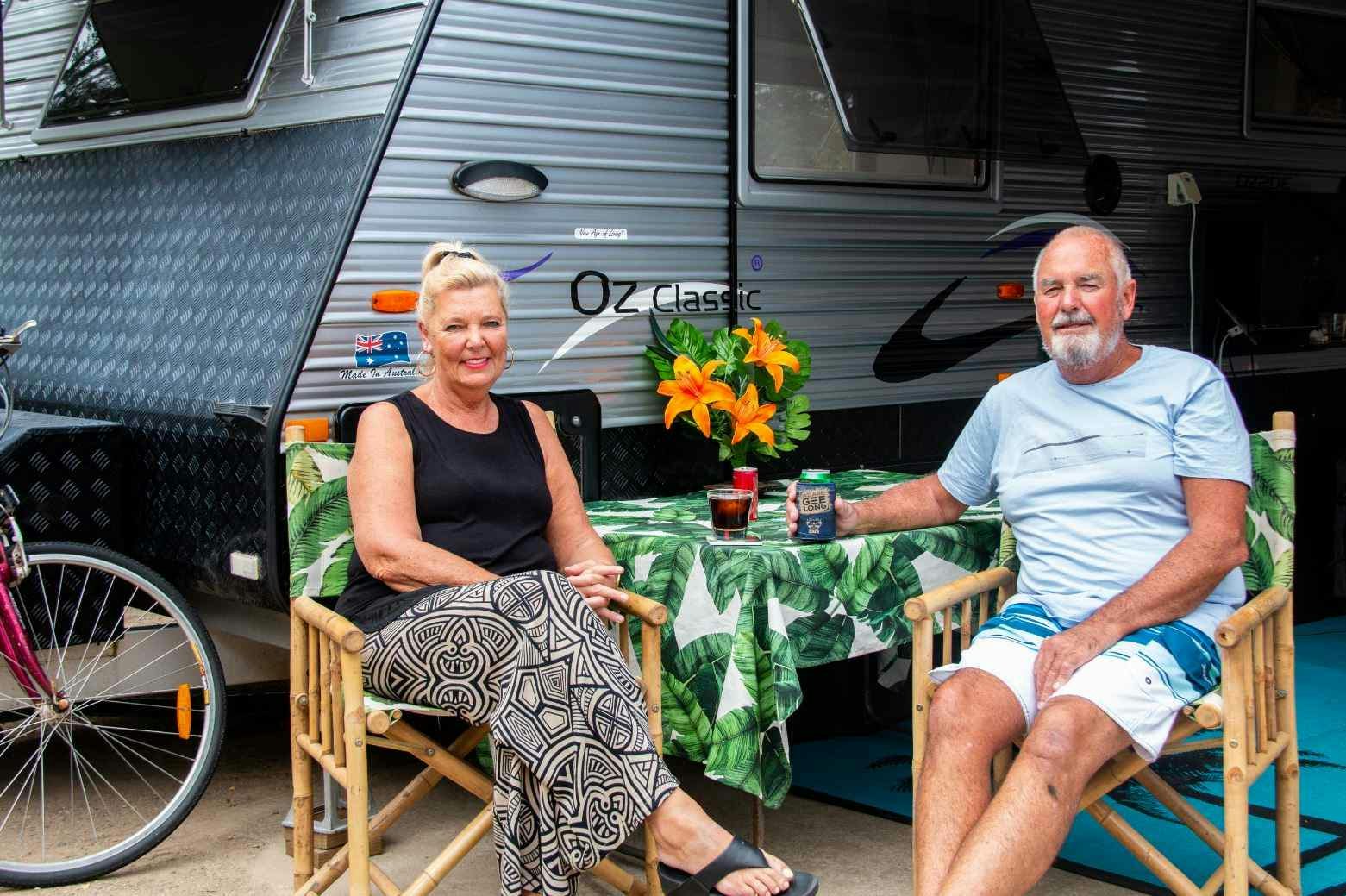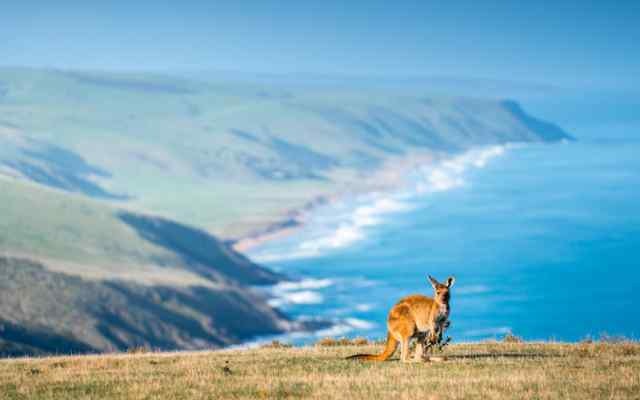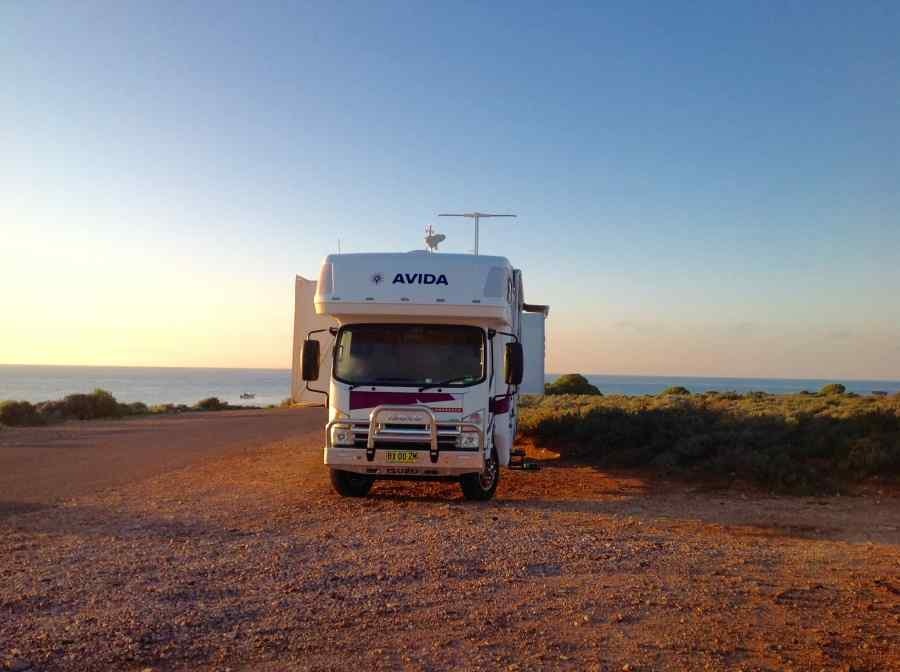15 ways to stay safe on your next road trip
Road trips are our favourite way to travel, but in a country as vast and remote as Australia, you’ll want to be prepared. Whether you’re hitting the road for a few days or a few months, here are 15 road trip safety tips to ensure you make it to your destination safely, ready to make memories.

PREPARATION
Check your car is road safe
You’re going to be relying on your vehicle when you’re on the road, so you want to know it’s up for the job. Make sure your servicing is up to date so any mechanical issues can be sorted in advance, and check your fluids and tyre pressure are at their optimal range. Don’t forget to check your spare tyre as well so you won’t get caught out if you get a flat far from home.
SAVE: G'day Rewards members save on servicing, tyres and other products with our huge range of automotive partners including Pedders Suspension & Brakes, Repco and more.
Plan your stops
A bit of planning for your trip goes a long way. Make sure you’ve plotted out how far you intend to travel each day, which parks you’ll make camp at, and where you will find petrol stations along your route. It’s always worth filling up if you have the opportunity rather than waiting for the tank to get low: in remote areas petrol can be subject to poor availability, so always be prepared.

SAVE: G'day Rewards members save 4c per litre on fuel with Shell Coles Express and Shell branded service stations.
Check your phone coverage
You don’t want to be caught needing to call for assistance only to find you’ve got no service. In Australia, different carriers offer better coverage than others, so it’s worth doing the research to make sure you will have service along your travel route.
Let someone know your itinerary
If you’re heading into remote country it’s a good idea to leave a copy of your itinerary with a friend or family member. Agree in advance how often you’ll check in with them and what they should do if they don’t hear from you. While it’s more likely that nothing will go wrong, it never hurts to be prepared to mobilise assistance in the event of an accident or emergency.

READ ALSO: 20 easy sustainable travel tips
PACKING
Take food and water (lots)
It might seem straightforward, but it’s really easy to underestimate how much water you’ll need on the road. 4-5 litres per person per day is a good benchmark, as well as a few extra day’s supply to keep you covered. In addition to healthy road trip snacks, keep a supply of non-perishable items in case of unexpected delays.
A map
Even the most techy-savvy among us know there is no substitute for a good map or road atlas on a long road trip. With phone coverage being patchy through some regional areas and places to recharge few and far between, always take a physical map to help you plan your route, any detours, or to find your way back on track of you’ve navigated off course.

First aid kit, tools and a torch
Preparation is key so make sure you’ve got everything on board you need in case of an emergency. At an absolute minimum, make sure you have a first aid kit, tool kit including a jack and tow rope, and torch (with extra batteries). Any regular medications are also a must.

Satellite phone / Emergency+ App
Especially when travelling through remote areas, a satellite phone or radio phone can be a life saver where there is no mobile reception. It’s also sensible to download the free Emergency+ App which can help you get the right information and contacts in an emergency, and uses GPS to help emergency services locate you.
READ ALSO: How to pack your caravan for a safe trip
ON THE ROAD
Check weather and road conditions before heading out
For each leg of your journey, make sure you’re checking weather and road conditions to ensure you’re not inadvertently driving into hazards. Local information centres and park staff will be able to give you advice on the latest updates, or check government websites for active incidents and advice.
Avoid driving at dawn and dusk
We love our Aussie wildlife but animals can be a major hazard on the road. Avoid driving at dawn and dusk, when animals are most active, and never drive at night when visibility is at its lowest. If you’ve never been in the outback after dark you might not realise just how dark it can be! Always aim to be settled into your campsite or cabin in park before the sun goes down.

Drive with your headlights on
Even on a sunny day! Keeping your lights on while driving in daylight hours increases your visibility to other road users – and that’s always a good thing.
Drive to conditions and slow down on unsealed roads
As always, drive to the road conditions. Make sure you have the right type of vehicle to tackle unsealed roadways and adjust your tyre pressure for rough conditions if required. Dust can reduce visibility and some areas will be prone to heavy corrugation. Remember that dips, water hazards and wildlife such as kangaroos, emus and cattle can appear quickly on outback roads, so be prepared.

Stop every 2 hours
Fatigue is a real risk and can sneak up on you very quickly while driving. Always plan stops at least every two hours to stretch your legs and have some refreshments. It’s best to stop before the signs of fatigue set in, but you’ll know it’s time to pull over if you’re experiencing yawning, tired eyes, lack of concentration or swerving.

Don't drive for more than 8 hours a day
Road trips are great adventures, but it’s important to balance driving with rest. The absolute maximum amount of driving you should do in a day is eight hours (broken up with rest stops every two), but ideally you’ll want to do a lot less. It’s good for safety, but you’ll also have more freedom to enjoy the scenery, towns and other attractions you’ll find along the road.
If you’re planning a long day’s travel, swap drivers for each leg of your journey if you can, to help keep each other safe.
In the event you get stranded
While most road trip risks can be avoided with the right preparation and care, accidents and emergencies can still happen. In the event that you break down or get stranded in the outback:
- Stay with your car
- Call or signal for help
- Stay sheltered from the sun
- Ration water and food
- Don’t panic
As remote as our outback regions can be, driving routes can have reasonably regular tourist and local traffic. You might have to wait for a few hours or a couple of days for someone to pass who will be able to help you get back on the way or alert support services in the nearest town, but never wander off in search of help. You’re easier to assist if people can find you, and your vehicle is much easier to spot than a person in the outback landscape.

READ ALSO: Tips for your next road trip with kids
Ready to hit the road?




